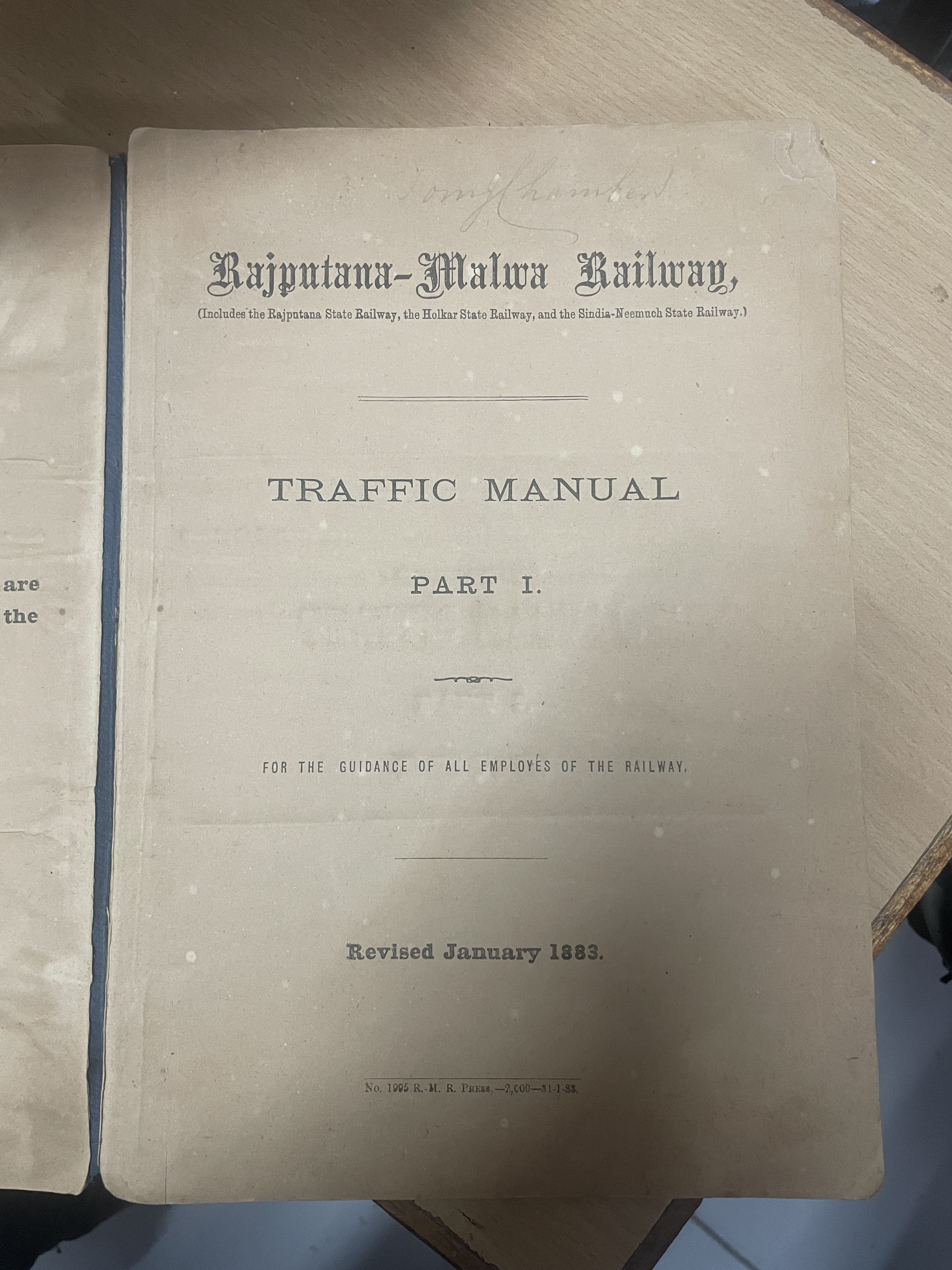Rajputana Malwa RailwayTraffic Manual part I

About
Summary
Exquisite
TOC
Details
Related
URL
Images
Overview
Rajputana-Malwa Railway Traffic Manual Part I Revised January 1883 would have been a vital document for the operation of the Rajputana-Malwa Railway (RMR).
The Rajputana-Malwa Railway was a 1,000 mm (metre gauge) railway line that connected Delhi to Ajmer and extended to Indore and Ahmedabad. Initially known as the Rajputana State Railway, it was renamed in 18821. The railway played a crucial role in connecting disparate regions and facilitating trade and transportation across British India.
Importance of Book
Economic Development: The railway facilitated trade and commerce by connecting key cities and regions, enabling the transportation of goods, raw materials, and agricultural products.
Connectivity: It provided connectivity to remote areas, integrating them into the broader economic and administrative landscape.
Administrative Control: The railway enhanced administrative control by enabling efficient movement of officials and resources.
Famine Relief: Railways played a crucial role in famine relief efforts by enabling the rapid transportation of food supplies to affected areas.
First Locomotive Built in India: The first steam locomotive, F-734, was built in 1895 by the Ajmer workshop of the Rajputana Malwa Railway.
Key Themes
Efficiency and Organization: The traffic manual would emphasize efficient railway operations, including time-tabling, freight management, and passenger services.
Connectivity and Integration: A key theme is the integration of disparate regions through the railway network, fostering economic and social cohesion.
Economic Growth: The manual indirectly supports the theme of economic growth by facilitating trade and commerce, contributing to regional prosperity.
Colonial Administration: The railway's operation reflects the administrative and logistical priorities of the colonial government.
Cultural Significance
Social Change: The railway brought about social changes by increasing mobility and interaction among different communities.
Urbanization: Railway junctions and stations became hubs of activity, contributing to the growth of towns and cities along the railway line.
Architectural Heritage: The construction of railway stations, bridges, and other infrastructure left a lasting architectural legacy.
Effects on Society
Economic Transformation: It transformed the economic landscape by facilitating trade, promoting industrial growth, and integrating regional economies.
Social Mobility: The railway increased social mobility by enabling people to travel for work, education, and pilgrimage.
Political Integration: It contributed to the political integration of the country by connecting far-flung regions and strengthening administrative control.
Colonial Legacy: The railway remains a significant part of India's colonial legacy, reflecting both the benefits and the exploitative aspects of British rule.
Conclusion
The Rajputana-Malwa Railway Traffic Manual Part I Revised January 1883 would have been a vital document for ensuring the smooth and efficient operation of a crucial railway network in British India. While the manual itself is not currently available, its contents can be inferred from the historical context and the broader role of the RMR in facilitating economic development, administrative control, and social change. The railway remains a significant part of India's history, reflecting both the advancements and the complexities of the colonial era.
Title
Rajputana Malwa RailwayTraffic Manual part I
Publish Date
1883
Vintage
1801-1900
Number of Pages
45
Category
Travel
Sub Category
Social Sciences
Rarity
RARE
